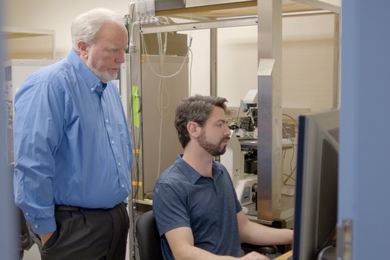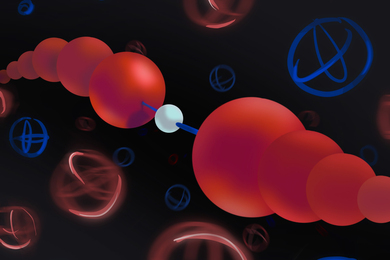MIT's School of Engineering was again ranked No. 1 in U.S. News & World Report's annual evaluation of American graduate school programs, which hits newsstands next week.
The School of Engineering's graduate program has achieved the top score in the U.S. News rankings each year since the rankings were created in 1990.
In addition to having the top U.S. graduate engineering school, MIT placed first in six of 12 engineering specialties - aeronautics and astronautics, chemical, computer, electrical, materials and mechanical engineering. The Institute's nuclear engineering program was ranked second, civil engineering third, biomedical engineering fifth and environmental engineering ninth.
The magazine's criteria for determining overall engineering rankings include peer assessment, recruiter assessment, research activity, faculty resources and student selectivity. For the first time, MIT's School of Engineering received a perfect 5.0 peer assessment score.
In ranking the various specialties, the magazine relies on assessments by department chairs at peer institutions.
In business, the MIT Sloan School of Management was rated the nation's fifth MBA program behind Harvard, Stanford, Northwestern and the University of Pennsylvania. Sloan's specialty programs in information systems, production/operations and supply chain/logistics were each ranked first.
The magazine this year updated its rankings of several doctoral programs. The Institute's graduate program in economics tied for first place with Harvard, Princeton and the University of Chicago. MIT earned top honors for its specialties in macroeconomics, microeconomics and public finance.
MIT also saw its graduate program in political science move to ninth place from 10th previously, while psychology advanced to 11th from 12th place. And, for the first time, the Institute's graduate efforts in history earned a nod with a 28th-place ranking (MIT does not offer a pure PhD program in history, but the discipline is part of the Doctoral Program in History, Anthropology, and Science, Technology, and Society (HASTS)).
U.S. News does not issue annual rankings for all doctoral programs but, instead, revisits them every few years. For example, in the most recent rankings for biology doctoral programs (2007), MIT tied for second with Berkeley. In the most recent rankings of doctoral programs in chemistry (2007), MIT was locked in a four-way tie for first with Caltech, Stanford and Berkeley. MIT's graduate physics program is tied for first with Stanford, according to the magazine.
The magazine's annual ranking of U.S. undergraduate schools is due to be published in August.
A version of this article appeared in MIT Tech Talk on April 29, 2009 (download PDF).





